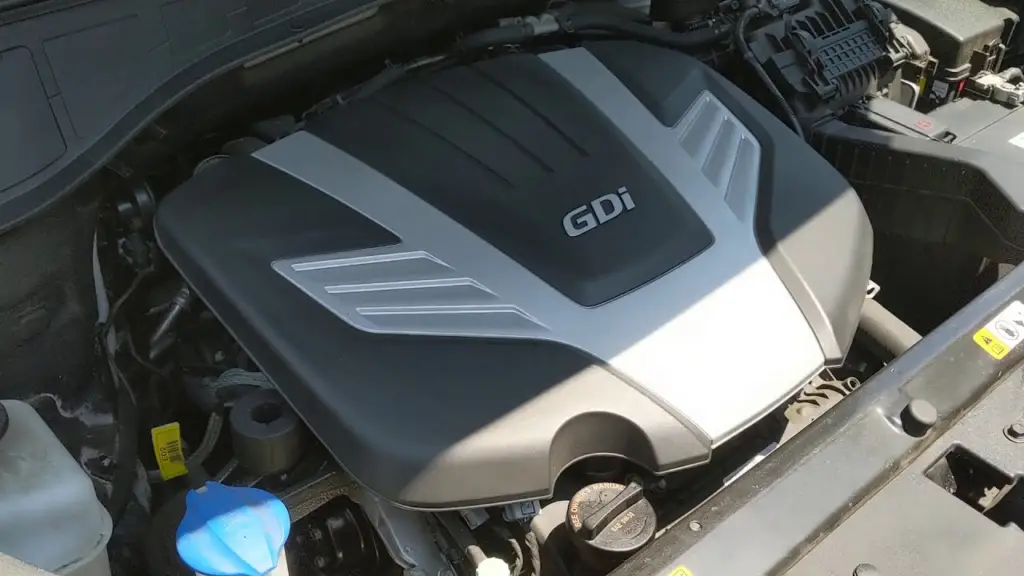Hyundai 3.3 v6 engine is prone to excessive oil consumption and engine failure. It’s important to address these issues early on to prevent further damage.
Common 3.3 V6 Engine Problems

Common 3.3 V6 Engine Problems:
- High oil consumption.
- Carbon buildup on intake valves, especially in GDI versions.
- Engine knocking.
- Potential for engine seizing.
- Stuck or seized piston rings.
- Issues with the oil system leading to serious damages.
- Faulty oil pressure sensor seal.
- Timing chain actuator rattle on startup.
- Cam bolt backing out.
Which Hyundai Models Face 3.3 V6 Engine Problems

The Hyundai models that face 3.3 V6 engine problems include:
- Hyundai Sonata
- Hyundai Santa Fe
- Hyundai Azera
- Kia Sorento
- Kia Sedona
- Kia Cadenza
- Hyundai Palisade
Symptoms of 3.3 V6 Engine Problems
Signs and Symptoms Indicating Engine Problems:
- Unusual Noises: Loud knocking, hissing, popping, or backfiring noises from the engine can indicate serious internal damage, such as worn bearings or issues with the combustion flow.
- Loss of Power: Experiencing reduced acceleration, difficulty climbing hills, or general sluggishness can signal problems with engine components like the cylinders, pistons, or fuel system.
- Overheating: An overheating engine often points to issues with the cooling system but can also indicate more severe engine problems.
- Oil Leaks: Visible oil leaks or a trail of oil can be a sign of gasket failures or other issues that could lead to severe engine damage if not addressed.
- Excessive Smoke or Exhaust: Large amounts of smoke or unusual exhaust could indicate oil burning or problems with the engine’s ability to manage combustion.
- Metal Flakes in Oil: Finding metal flakes in the oil during changes can indicate severe wear and tear inside the engine, which is often a precursor to engine failure.
How Drivers Can Recognize These Issues Early On:
- Regular Monitoring: Keep an eye on the engine’s performance, including any strange noises or changes in the exhaust output.
- Routine Inspections: Regularly check fluid levels and the condition of the engine through visual inspections and oil changes.
- Diagnostic Checks: Utilize OBD-II scanners to check for any diagnostic trouble codes (DTCs) that can indicate underlying issues not immediately apparent from physical inspections.
- Professional Evaluations: Have the vehicle inspected by a professional mechanic if any symptoms arise or if the vehicle behaves unusually during operation.
- Attention to Warning Lights: Pay close attention to any warning lights on the dashboard, especially the check engine light, which can indicate a variety of engine problems.
Causes of 3.3 V6 Engine Problems

The Hyundai 3.3 V6 engine, particularly the Lambda series, has generally been considered reliable. However, like any mechanical system, it can develop issues over time due to various factors. Here are the root causes and contributing factors to the problems observed in the 3.3 V6 engines:
Manufacturing Defects
- Debris and Metal Shavings: During the manufacturing process, improper cleaning of engine components can leave metal shavings or debris, which circulate within the engine’s oil system. This can lead to premature wear of critical components like bearings and can cause the engine to seize.
Design Flaws
- Weak Timing Chain: Some users have reported issues with the timing chain, which can stretch or fail prematurely, leading to severe engine damage.
- Head Bolt Issues: In some cases, the aluminum engine block and heads do not interact well with the head bolts, causing them to stretch or strip, which can lead to head gasket failures and overheating.
Maintenance Issues
- Oil Changes and Quality: Frequent and timely oil changes are crucial for the health of the engine. Using high-quality oil and adhering to recommended oil change intervals can prevent issues like oil sludge, which can clog the engine’s oil passages and lead to oil starvation.
- Cold Start Issues: Problems during cold starts, such as knocking or rattling, can indicate oil flow issues or wear in the engine that only becomes apparent when the oil is thick and moves slowly.
External Factors
- High Mileage Wear and Tear: As the engine accumulates miles, natural wear and tear can lead to issues such as increased oil consumption, carbon buildup on intake valves, and general degradation of engine components.
- Environmental Conditions: Operating the vehicle in extremely cold or hot climates can exacerbate existing issues or highlight weaknesses in the engine design and maintenance regimen.
Systemic Issues
- Fuel System Design: The Gasoline Direct Injection (GDI) system, while efficient, can lead to carbon buildup on intake valves, which affects engine performance and durability.
- Sensor and Electronic Failures: Failures in sensors or electronic controls related to the engine can lead to improper engine management, which might manifest as poor performance, stalling, or knocking.